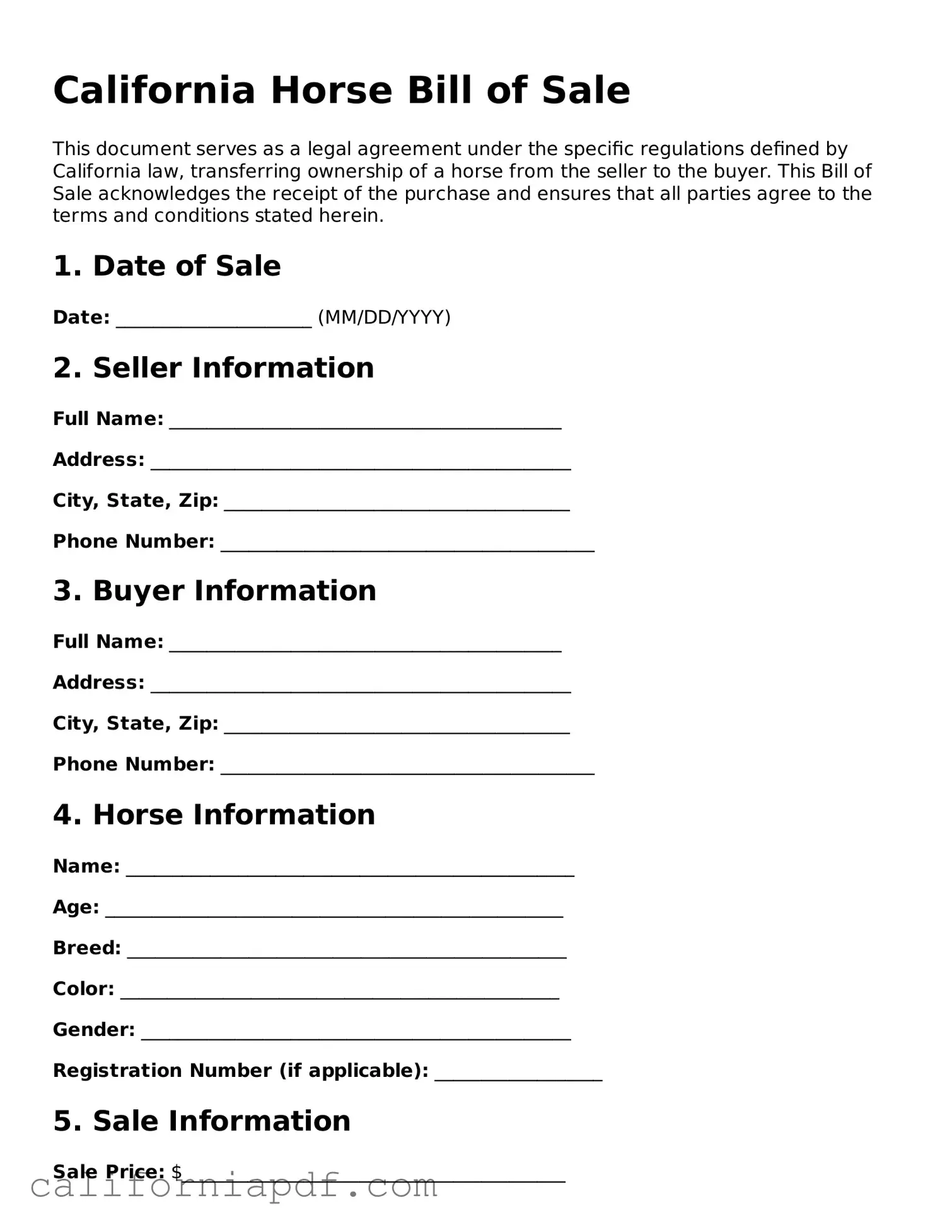California Horse Bill of Sale
This document serves as a legal agreement under the specific regulations defined by California law, transferring ownership of a horse from the seller to the buyer. This Bill of Sale acknowledges the receipt of the purchase and ensures that all parties agree to the terms and conditions stated herein.
1. Date of Sale
Date: _____________________ (MM/DD/YYYY)
2. Seller Information
Full Name: __________________________________________
Address: _____________________________________________
City, State, Zip: _____________________________________
Phone Number: ________________________________________
3. Buyer Information
Full Name: __________________________________________
Address: _____________________________________________
City, State, Zip: _____________________________________
Phone Number: ________________________________________
4. Horse Information
Name: ________________________________________________
Age: _________________________________________________
Breed: _______________________________________________
Color: _______________________________________________
Gender: ______________________________________________
Registration Number (if applicable): __________________
5. Sale Information
Sale Price: $_________________________________________
Payment Method: ______________________________________
Other details or terms of sale:
____________________________________________________________
____________________________________________________________
6. Warranty
The seller warrants that they are the lawful owner of the horse and have the right to sell it. The horse is sold "as is," with no further warranties expressed or implied regarding its condition or fitness for a particular purpose.
7. Signatures
This agreement is binding and acknowledges the transfer of ownership as of the date stated above. Both the buyer and seller agree to the terms and conditions stated in this California Horse Bill of Sale.
Seller's Signature: ________________________ Date: ___________________
Buyer's Signature: ________________________ Date: ___________________
This document is subject to the laws and regulations of the state of California and is considered binding upon both parties involved in the transaction of the aforementioned horse.
